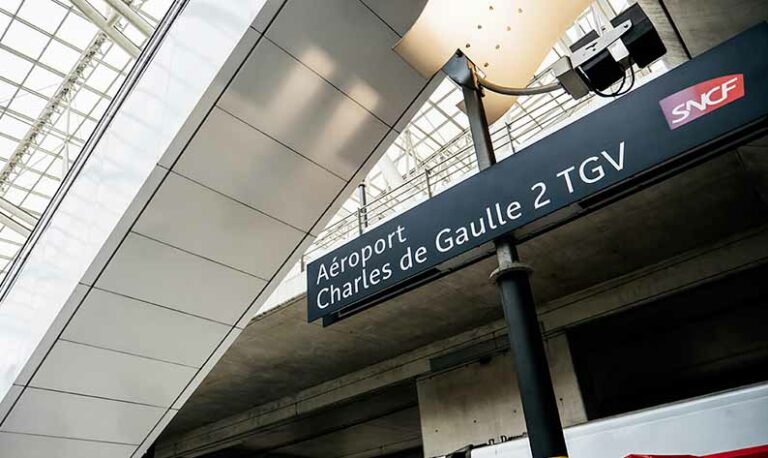Have Data, Will Travel: Unlocking the Best Connectivity Options and sim card france
Planning a trip to France? Don’t forget to pack your data! Because these days, it’s challenging to travel without the convenience of your mobile device. Whether you want to stay connected with family and friends, navigate the local area with ease, or share photos on social media, staying connected is de rigueur. But what’s the best option for mobile connectivity while traveling? Should you go for an eSIM, a traditional local SIM card, use your carrier’s data plan, or rely on local Wi-Fi?
We get questions about this all the time, so in this article, we’ll explore the various connectivity options available for your trip to France and help you find the best solution. Say au revoir to data woes and bonjour to seamless connectivity in France!
Table of Contents
Your Top 3 Options for Staying Connected in France
There are three main ways to use your mobile device in France. Each has pros and cons, and which one is right for you will depend on how new your phone is and how comfortable you are with doing some basic technical functions. Let’s look at the options.

Wi-Fi + International Roaming
You could think of this as the “do nothing” option, because you won’t have to fiddle with your phone’s inner workings. France offers numerous public hotspots, especially in Paris, and in most hotels or short-term rentals, Wi-Fi is part of the package. Pair this with an international data plan from your current provider, and you’ll be good to go.
- Pros: Ease! If you don’t feel comfortable adjusting settings on your phone or replacing a SIM card, this is the best option.
- Cons: Expense and lack of control. International data plans are often the most expensive way to stay connected while traveling. And you may not be able to access Wi-Fi at a critical moment, which can be frustrating if you’re using a GPS program or trying to do something critical.
Traditional SIM card
Traditional SIM cards are the most common and widely used option for staying connected in France. They require a physical card that you insert into your phone. Traditional SIM cards offer the advantage of being widely available, supporting most devices, and providing reliable connectivity.
- Pros: Low cost & Everywhere: You can get a new SIM card at the airport or in town, and once you load it, you’ll have a French phone number and data for whatever you need.
- Cons: A little bit techie. You need to be comfortable changing out the SIM card yourself (or you can ask the person who sells it to you to do so), and you have to keep your old card safe while you travel, as it has your phone number.

Digital eSIM
eSIMs are a relatively new technology that allows you to activate a digital SIM card on your phone without the need for a physical SIM card. They offer the advantage of being able to switch between multiple carriers without changing physical SIM cards (usually using an App).
- Pros: Easy to use & good data options. You won’t have to trade out or keep track of a physical card, but you still get the benefits of a local data plan. You can activate it before your travel to be ready right away.
- Cons: You need a newer phone to do this, so it won’t be an option for everyone.
Want to know if your phone supports esims? check this article.
Understanding the different types of eSIM and SIM card options available in France
If you’re trying to decide which is better, an eSIM or traditional SIM card, you’ll want to understand the different types available. This will help you make an informed decision based on your travel plans, budget, and how much data you think you’ll use.
Let’s take a look.
eSIM types
- Global eSIM: These eSIMs offer coverage in multiple countries, including France. They are ideal if you’re planning to visit multiple destinations and want the convenience of a single eSIM for all your connectivity needs.
Price: Packages would go from as low as $9 (1GB) up to $69 (20GB) for a certain validity period. Check Globel eSim rates & validity here. USE CODE FRENCHIES24 for 10% DISCOUNT. - Local eSIM: Local eSIMs are specific to a particular country or region. If you’re only traveling to France, a local eSIM may offer better rates and coverage compared to a global eSIM. The cost would be lower:
Price: Packages would go from as low as $4.5 (1GB) up to $36 (20GB) for a certain validity period. Check local eSIM rates & validity here. USE CODE FRENCHIES24 for 10% DISCOUNT.

SIM card types
- Prepaid SIM card: Prepaid SIM cards are a popular choice for travelers as they offer flexibility and control over your spending. You purchase a specific amount of credit and use it as needed. Once the credit is used up, you can easily pay to add more data, called topping up.
- Postpaid SIM card: Postpaid SIM cards require a contract and are billed monthly. They may offer additional benefits such as higher data allowances and international calling options. However, they require a longer commitment and may not be suitable for short-term travelers.
Buying and using a SIM card in France
A local SIM card is a great option. It lets you enjoy local rates, access to data, and the convenience of having a working phone number.
Step 1: Check if your phone is unlocked
Before you can use a SIM card in France, make sure your phone is unlocked. If you purchased your phone from a carrier in the US, like Verizon or ATT, it may be locked to their network. Contact your carrier to unlock your phone or consider using a spare unlocked phone for your trip.
Check if your phone is unlocked in this video.
Step 2: Choose a local provider
France has several mobile providers offering prepaid SIM cards for tourists. Some popular options include Orange, SFR, Bouygues, and Free Mobile. Most offer preset data packages for a certain period of time. Research their plans, coverage, and prices to find the best fit for your needs. Orange being the biggest carrier and network, we recommend using their prepaid SIM card for better coverage. Check the options here.
Step 3: Purchase a SIM card
Once you’ve chosen a provider, you can purchase a SIM card either online or in-store. You can also get them at either Charles de Gaulle or Orly airport, and most train stations that handle international arrivals. The person you’re buying the card from should be able to help make sure you get the right size card for your phone model (standard, micro, or nano). You can order it online here.
Step 4: Activate your SIM card
After purchasing a SIM card, you’ll need to activate it. Follow the instructions the provider will give you, which will include registering your details and inserting the SIM card into your phone. Again, if you’re uncomfortable swapping out the actual cards, this is something they should be able to do where you purchase the card. Activation can be done online or through a phone call.
Step 5: Top up your credit
Once your SIM card is activated, you’ll need to top up your credit to make calls, send texts, and use data. Many providers offer various top-up options, including online top-ups, vouchers, or automatic top-ups linked to your credit card.
Buying and using an eSIM for your trip to France
If you’ve decided to go with an eSIM, here’s what you’ll need to do to buy and activate it.
Step 1: Check eSIM compatibility
Make sure that your device supports eSIM technology. Most newer smartphones, such as iPhones and some Android devices, have built-in eSIM capabilities. Check your phone specifications or consult the manufacturer’s website to confirm compatibility. Want to know if your phone supports esims? check this article.
Step 2: Choose an eSIM provider
Research and compare different eSIM providers that offer coverage in France. Consider factors such as coverage, data plans, pricing, and customer reviews. Popular eSIM providers include Airalo, Truphone, and Ubigi. For Airalo, USE CODE FRENCHIES24 for 10% DISCOUNT.
Step 3: Purchase an eSIM activation code
Once you’ve chosen an eSIM provider, visit their website and select the data plan that suits your needs. Purchase the eSIM activation code, which will be sent to you via email. The code is unique to your device.
Step 4: Activate the eSIM
Follow the instructions provided by the eSIM provider to activate your eSIM. This typically involves scanning a QR code with your device’s camera or manually entering the activation code. Once activated, the eSIM will be ready for use.
Step 5: Manage your eSIM
After activation, you can manage your eSIM settings through your device’s settings menu or through the provider’s app if you download it. From there, you can access data plans, monitor usage, and switch between different eSIM profiles if available.
It’s easier than ever to stay connected while traveling in France thanks to the availability of eSIMs, SIM cards, and local Wi-Fi. So, pack your bags, unlock the best connectivity option for your needs, and enjoy a connected and memorable experience in beautiful France! The ultimate pros of using a local SIM or eSIM compared to your carrier is that you can managed cost more efficiently.






